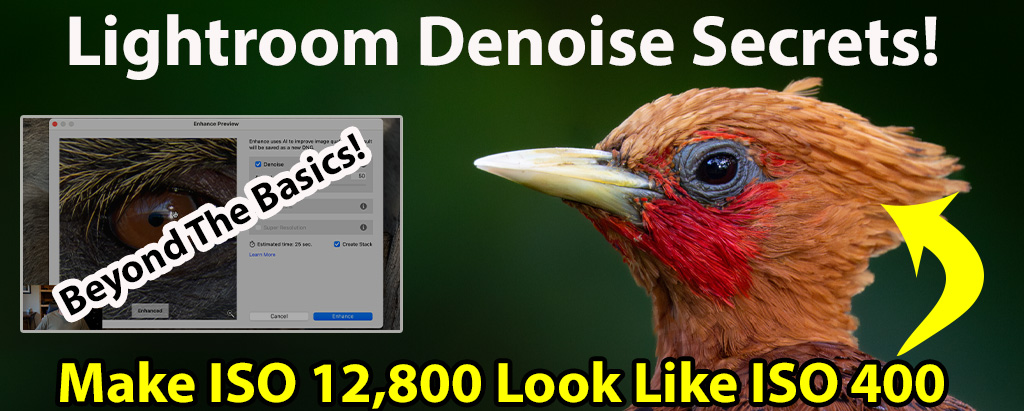Couple of thoughts…especially as I’m one of the people that say we have good NR software these days…but no rage though

. Obviously the tips to shoot as low as possible and fill the frame are good…but my comments about the NR software being good aren’t in the vein of “we don’t need to worry about high ISO” but rather in the threads where I say that in talking about faster lenses and the difference they make…of course they make a difference but my point was that for many of us the output usage and other factors mean that the NR is good enough. Steve has a different need than most of us that aren’t making our living with photos…he is and for his purposes the exotic expensive lenses and getting absolutely best IQ are what pays his bills…while the rest of us amateurs don’t necessarily have the same requirements. I haven’t ever said I don’t care about high ISO…shoot as low as possible but in situations where it is needed then go ahead. For something like the GBH…maybe I skip the shot because I’ve got thousands of GBH shots…but for the pair of lions drinking by the stream at suspense…yeah, I’m taking those. I was at 840mm for those shots with my 600PF and the bean bag and long bursts let me get usable for me shots…whether Steve would agree they’re usable is a different story but he’s been to Africa a lot and has had way more lions drinking at suspense opportunities than I have. You do what you can to get low ISO and critical sharpness…but then NR helps…not as much maybe as a faster lens and NR but if one doesn’t have the 600TC lens for several reasons then you get the best shot you can and PP. Steve needs to be picky…the rest of us don’t need to but would want to be as picky…but then all of those other factors come into play in determining how picky am I willing to be and at what cost “money, capability, physical limitations, amount of practice and the host of others). Like I said about the lion drinking…nobody that looked at the blog commented and said it would have been a better shot at ISO 500 instead of whatever it was. They said…cool photo. There are some even in the non pro category that demand the best and are super picky…and theres nothing wrong with that.
Second…where the output is going makes a difference…print or magazine sales require a different level of “good” than travel blog or amateur portfolio shots.
Thirdly…and few discussions of the high ISO issue get into this…pixel peeping at 2:1 isn’t necessarily the same as looking at final output images at the size they will be used. Yes, peeping is necessary while working on shots…but nobody ever does these sort of comparisons at output. Downsampling for print can’t help but reduce fine detail…and for screen even more reduction happens, that’s just physics for you. That loss means that the gap between the fully processed images gets less…and the better is the enemy of good enough idea comes into play. I’m not saying peeping isn’t needed and good…but final output comparisons at the size they’ll be used comes into play as well.
All that said…another excellent video showing why one needs to get ISO as low as feasible…and a good comparison of both the various NR methods and that one isn’t always better.
I have both DxO and Topaz…and almost all my NR is in DxO because I can batch process the selects and come back later…my patience level and LR skill level make it generally do better for me than using his manual LR method. I agree that Topaz oversharpens and DxO is better at either toning it down or leaving it off and sharpen in LR because I’m better at sharpening there than in NR. The differences he was pointing out in the details weren’t really very apparent when I looked at it on my iPad…some of that is probably YouTube compression but I’m going to look at it again on my Studio Display and see if they’re more apparent. On the iPad seeing the NR is easy but the details differences and stringiness/fake detail comparisons were hard to see…hopefully the better monitor will show them better.


